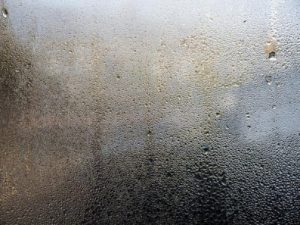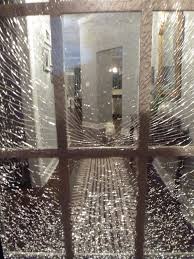
Windows are the eyes of your home, that is why it is cruciall to keep them always clean and unscathed. Windows let light and heat enter the room, they also protect you from rain and dust getting in, and it is barely possible to imagine a house without windows. Over the course of istory, the humanity has been looking for ways of improving this past of dwelling to make it more effective and reduce such unwanted effects as drafts and frosting. Before glass was invented, people had to make their windows using paper, mica, flattened animal horns and even bull badders. It was hard to enjoy the view with such windows, and the atmosphere in the rooms was suffocating, so glass was a miracle come true. But glass windows also had their disadvantages, although these were far cry from the ancient window problems.

Nowadays there is a number of window types for every house, design and income. Sometimes this abundance makes it difficult to work out what we need and what we should purchase, so, before replacing your old window, we really recommend that you read attentively and compared the available options. One of such options, widely used nowadays, is window gas fills.
What is it? Why do we need to fill our window with something? Can it possiby be hazardous or dangerous?
Most of the modern windows are double pane or tripple pane, which means they are made of two or three pieces of glass (panes). In order to make your windows more energy efficient, which supposes that your house will lose less heat in cold weather and not get overheated in hot periods, the gap between the panes can be filled with inert gases, like argon or krypton. For this, two little openings are made in the window spacer, one to intoduce the gas and the other one – for the air to come out.
What are inert gases?Inert, or noble, gases are not chemically reactive, they do not interact with other substances. Moreover, the molecules of inert gases move slower than the ones of the other gases, consequently, inert gases show low thermal conductivity, they do not let the heat escape from the room when it is cold outside, and do not let the heat in when it is hot. Slow, but effective guards for your heating bills.

The most popular inert gas for filling is argon, as it is very cheap and easy to produce (the atmosphere of the Earth is 1% argon. That´s pretty much. And you´re breathing it in righ now), the other option is usually krypton – its insulation properties are even better than those of argon, but it is slightly more expensive. Argon is usually used in double-pane windows, krypton is more frequent in tripple-pane ones. On some occasions, a mixture of krypton, argon and oxygen can be used, as well as xenon and nitrogen.
Are they hazardous? No, they definitely aren´t. Remember what we have said – our air is 1% argon, and this is a considerable amount. In the internet you may find out that argon is hazardous – it really is if you try to inhale 100% pure argon instead of air. In this case, according to this Material Safety Data Sheet, you will really have dizziness, asphyxia, vomititng, headaches and other unpleasant sensations. But for this you will have to stay in a closed space with a large amount of pure argon. As specialists say, gas leakages from the windows are inevitable, but really insignificant – approximately 1% per year. Now, look at the gap between your window panes. Even if you breathe in all of the gas from this gap, it still will not be enough for anyone to feel slightest discomfort. So don´t be afraid and remember – argon can only be dangerous in high concentration and big amounts. Just as anything else!
Now, let´s get back to the leakages.As we have mentioned, your windows will slowly get depressurized and lose about 1% of the gas per year due to different circumstances like the quality of the window itself, the climate of the building, the altitude and others. But, according to the National Glass Association, even 80% of gas fill remaining will ensure that your window functions properly and stays energy-effective. That means that your gas-filled window can serve you for twenty years – as any other window.
How do you know your window loses the gas faster than it is supposed to? If you notice condensation or fog inside of your window unit, it means that the gas has left and was replaced by humid air. In this case you will have to contact the installer or the manufacturer so that they fix the problem. But remember to clean the exterior surface of the window to be sure the condensation you see is really inside the window.

How do you know your window loses the gas faster than it is supposed to? If you notice condensation or fog inside of your window unit, it means that the gas has left and was replaced by humid air. In this case you will have to contact the installer or the manufacturer so that they fix the problem. But remember to clean the exterior surface of the window to be sure the condensation you see is really inside the window.

Modern windows do not only let the light into your room, they can save your money and protect you from colds and heats, as well. InterNACHI inspectors can help you decide what exactly type of window you need and if it is a good idea for your house to have insulated glass units (IGUs).


